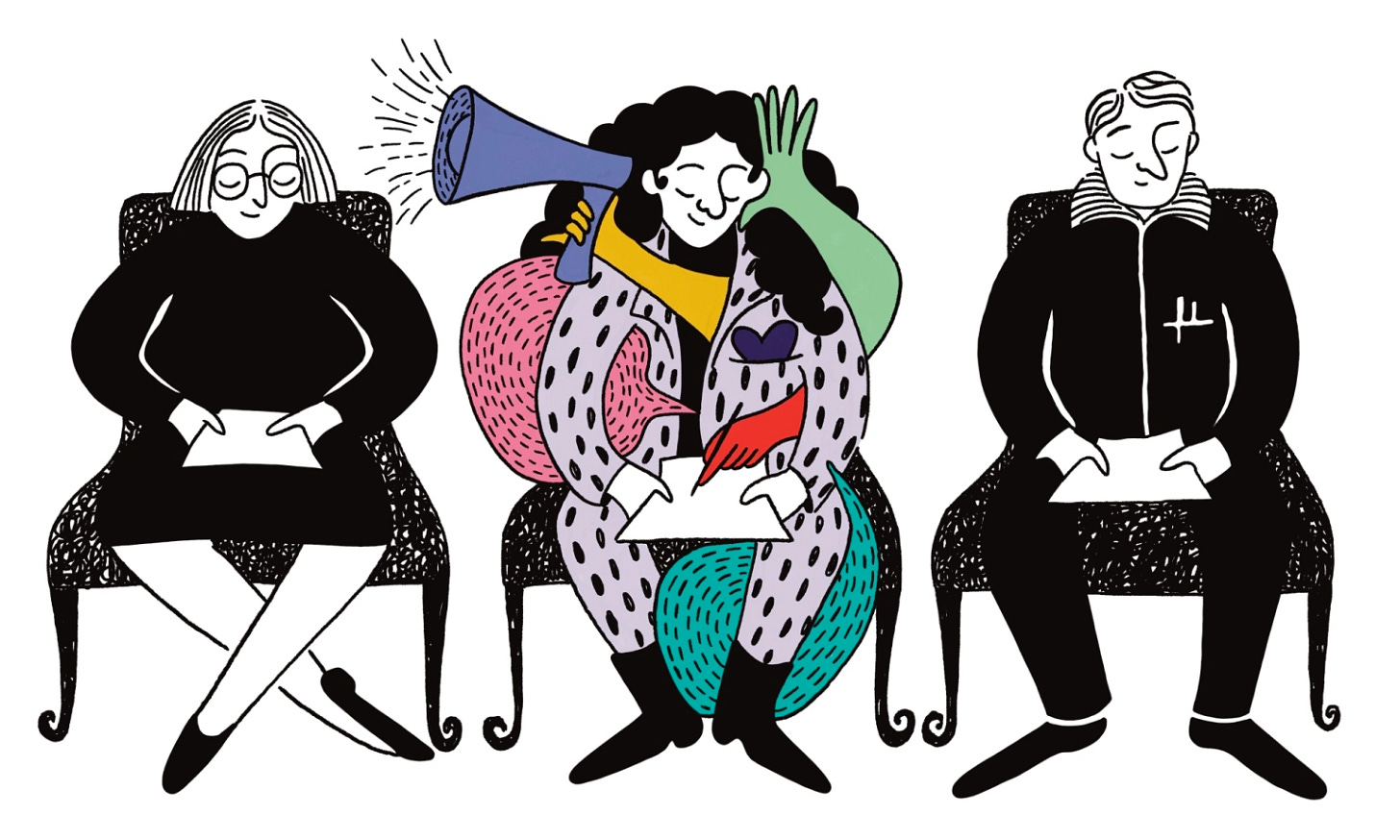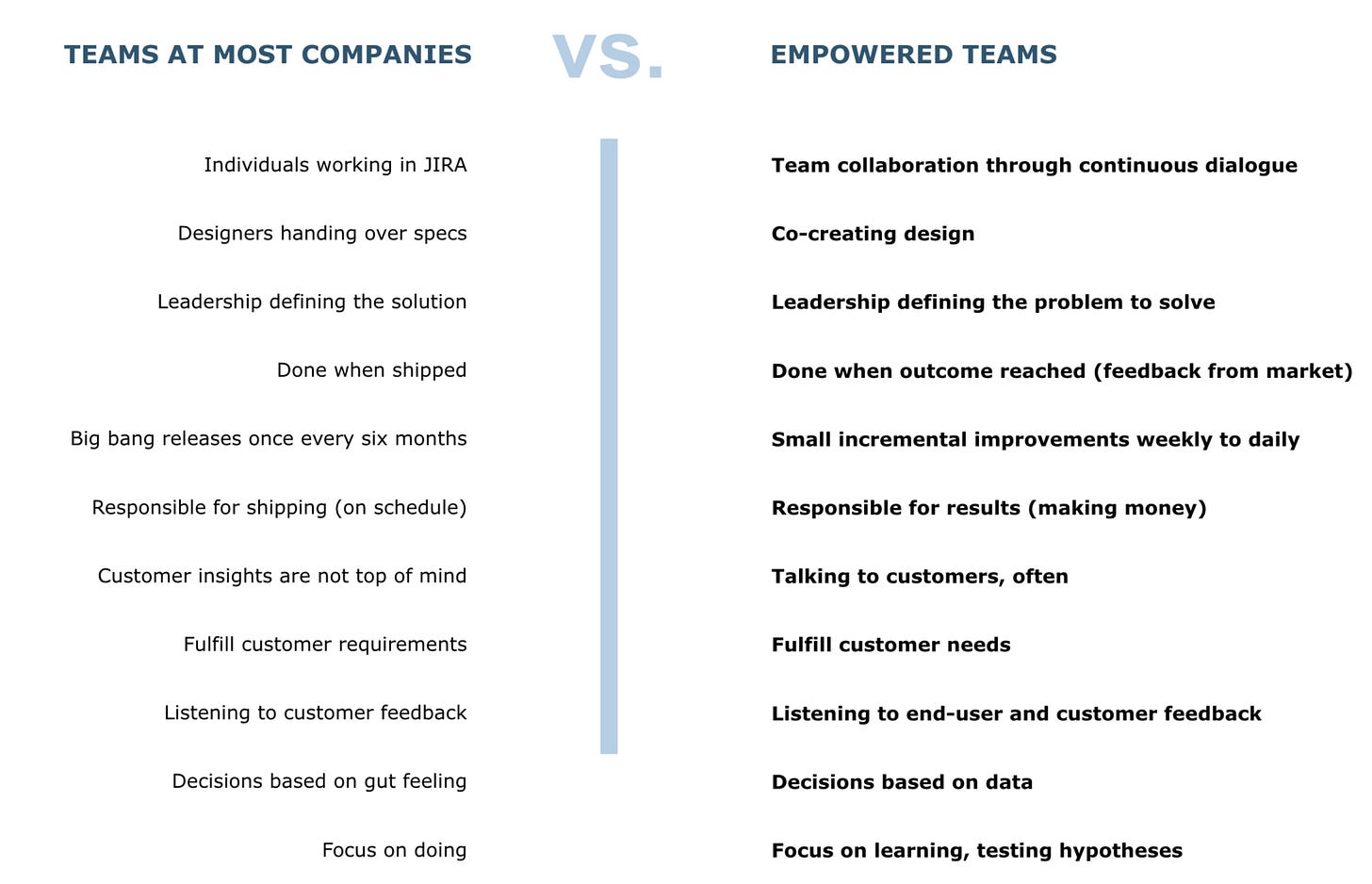Navigating uncertainty and supercharging high-performing teams with new technologies
It has been another July in San Francisco where you can hear, but not see, the fireworks. This morning as Lancaster and I walked to the Ferry Building, Karl the fog (yes, it has a verified Instagram account) was still lingering, hiding the Salesforce Tower from view.
I was reflecting on conversations and slack channel updates from the prior week. In a number of situations, individuals asked for the “right” way to do something. Often answers were informed based on the person’s past experience. Others began with “it depends” as factors such as context, resources, skills, and timing typically influence the best path forward. Identifying the right approach in product management can seem obscure, a bit like looking for sparks of fireworks through the fog.
In product management there is always the opportunity to innovate, to do things differently, and to add a bit of your own special super power to turn chaos into order. I appreciate not everyone enjoys the unknown, yet to be a product manager it helps to thrive on navigating uncertainty. Why? As I shared in the prior newsletter, being a product person means that by definition you're living in a world where no one knows the right answer yet because if somebody did, they would've already built it.
In this week’s newsletter, I’m focusing on articles which will help you navigate through the product management fog and learn practices that help setup product teams for success. When applying these articles to your work, consider your set of “it depends” variables and make the techniques your own. Now let’s dive in.
5 Things You Will Never Learn From Management Books
Imagine if we could read a book, implement the practices as written, and have everything work perfectly. Well, the author informs us, life doesn’t work that way as humans are involved. There will be individuals and experiences that “test your limits and get you out of your comfort zone”. It’s the combination of learning from others and your own experiences, good and bad, which enable you to develop as leader.
“To get better at [leadership and] management you have to get better at understanding people”
The article highlights five lessons from the author’s own experience, and guidance of mentors, which helped him to develop as a leader and manager.
Trust is crucial - Management books stress goal setting, yet without a foundation of trust, it will be harder to reach the goal. When there is trust, everything becomes easier. To establish trust, follow these steps consistently:
Say you will do something —> do it —> show that you have done it
Keep demonstrating the steps, and people will realize you are someone they can depend upon and be more willing to help out or follow your lead.
Reading is not enough - You get experience by navigating various situations. Reading about them provides a foundation and makes you better informed, yet it’s how you apply the learning which conveys your management style.
You need to understand politics - In every organization, resources are finite - whether people, funds, or attention - and connections often plays a role in how they are allocated. To ensure your team’s success, think beyond your own team. Identify opportunities (innovations, products, processes, etc.) which bring more value and benefit the organization - not just your team.
Management debt - Don’t do things that you should do (hold 1:1s, build trust, support your team, etc), and management debt will pile up. Similar to tech debt, there will be undesired consequences later on.
Doing the right things in management is like brushing your teeth every day. If you skip a day or two, your teeth will be fine, but if you constantly don’t do it, your teeth will decay and fall out.
Management is not just a thinking game - It’s a doing game too. Remember the four prior steps. They require thoughtful action - both big and small. For example, helping a colleague who is struggling with a small task may not seem to be the best use of your time, but your assistance signals you are there for your team and helps to further develop trust.
Let’s stop calling them “soft skills” — and call them “real skills” instead
Building on the prior article, working with humans is fun and tricky. I believe it’s the often underrated soft skills that set the best leaders apart. Seth Godin feels the same way too. Note: I touched on the importance of soft skills in a previous newsletter.
Seth starts off by explaining what sets apart successful organizations as everyone is hiring “similarly vocationally skilled people”.
What actually separates thriving organizations from struggling ones are the difficult-to-measure attitudes, processes and perceptions of the people who do the work.
Organizations often hire based on vocational skills as they are easier to measure. Then when someone is hired and lacks “soft skills”, team and company culture take a hit. Leaders stress about firing them as doing so could be perceived as “getting personal”.
To get yourself out of this bind, Seth recommends reinforcing the importance by using the designation “real” skills (instead of “soft”) and putting “real” skills on the same level of importance as vocational skills.
Real because they work, because they’re at the heart of what we need today.
Real because even if you’ve got the vocational skills, you’re no help to us without these human skills, the things that we can’t write down or program a computer to do.
When interviewing potential new hires go beyond the vocational skills. Include questions which provide a window into the candidate’s “real” skills. For example ask questions which explore behavioral characteristics, such as how they reached a difficult goal and how they work most effectively with others. Do the answers reflect an individual who seeks out collaborative ways to improve the customer and/or organization experience or are the answers filled with self promotion? Often times you can teach someone vocational skills, yet coaching a person to change their personality can be a non-starter - especially if they have a fixed mindset.
For existing employees, when conducting performance reviews, consider if they listen with patience and go into situations seeking to understand or is their style to belittle, intimidate or control. If the later, provide context and explain the impact their behavior has on others. They may not realize how they were coming across.
Throughout don’t overlook the importance of your role as a product leader. By being human and demonstrating “real” skills, you can raise the bar for your team and colleagues.
6 core principles for structuring high-performing product teams
How an organization structures the product team directly influences the team - and the company’s - success. Can the product team flex and scale as the business grows? Is there growth potential which supports the company’s vision and provides a sense of ownership and empowerment?
Yes, it’s another “it depends” scenario as there is no one “right” way to structure a product team. The author provides eight core principles to consider, which I find apply to all types of organization, not just enterprises.
Size of the team: The minimum ratio is one product manager to two engineers, which you’ll often see in growth roles. With platform or more technical products, the numbers can rise to one product manager to 10–12 engineers.
Product vision and strategy: The vision describes the desired future state, and the strategy provides what the product hopes to accomplish and how it plans to move towards the vision. [I wrote about product strategy in a prior newsletter.]
Minimize interdependencies: We live in a cross-functional world, so there will be dependencies. It’s the product lead’s responsibility to keep them to a minimum to ensure their team remains nimble and empowered, especially during times of change.
Provide ownership and autonomy: Another benefit of #3 is people feel in control and accountable for their product offering. For example are there product lines or common capabilities aligned to customer personas you can follow to empower your team as you (re)define the org structure (per the diagram below)?
Maximize shared services: Reducing repetition increases speed. Shared services can accelerate a team’s delivery while increasing agility and reliability. To minimize interdependence, there must be clear guardrails on what defines a shared service and who is responsible for the creation.
Continuous (re)alignment: In product, nothing is ever done. The same can be said of a product org model. As your technology, customer needs, and business evolves, you will need to monitor when and how to realign your product team.
Preparing For The Future
After referencing the benefit of empowered product teams, it seemed only nature to highlight an article by Marty Cagan. And, what could be foggier than the future we face today as AI puts all types of roles into question.
Marty starts off defining the audience for the article - “this article is for those of us that will be building the products of the future.” Unless you’re working on a ‘Back to the Future’ remake, I’m guess a big majority want to build for the future not the past. What about building for today? As tomorrow continually becomes today, the theoretical debate is best saved for a future newsletter…
Another thing I’ve learned about disruptive technologies, and I try to always keep in mind, is known as Amara’s law: “We tend to overestimate the effect of a technology in the short run, and underestimate the effect in the long run.” Maybe generative AI will prove to be an exception, but I doubt it.
In product companies, we live for these disruptive technologies. They are what allow us to solve long-standing problems in ways we could not have imagined before.
After this quote, Marty provides 10 suggested changes to how we create products (e.g. how we work) given the rise of generative AI.
1. PRODUCT TEAMS AND TEAM TOPOLOGY
Because of new AI-powered tools, the cognitive load (how much a person must keep in their head) is likely to go down, which means the scope of what a team is responsible for can increase.
You could leap and say the number of product people needed could drop as result (as we’re seeing now). Marty has a positive future view, “historically, over time, companies pursue more products, and more new companies are created, so the industry experiences overall growth.”
2. TEAM AUTONOMY AND INITIATIVES
One of the major drivers of job satisfaction among product people is their level of autonomy, e.g. how much they can control themselves, versus how much they must depend on others for. [Remind you of point #4 from the above article…?]
One of the likely major benefits of the new generation of AI-powered tools is that autonomy increases to the level where a single product team can tackle larger initiatives.
3. TEAM SOCIAL DYNAMICS
Product teams are very much social constructs, based on trust [recall the first article]. Generative AI tools might make it easier for people to interact primarily with AI-based agents and even less with their cross-functional colleagues.
This is where product leads need to be mindful as product roles are necessarily cross-functional, and the key to real innovation is collaboration. Thus we must continue to find ways to use new tools to help nurture trust and collaboration.
4. THINKING AND JUDGMENT
Product is about bringing together cross-functional groups to apply thinking and judgment to solve hard problems in ways that our customers love and work for our business.
There are two sides. Product teams experimenting with ChatGPT to challenge their thinking and cause them to expand their view. Or, teams blindly accepting a prompt response without thinking through whether it makes sense, is the best course of action, or if the output is even relevant. The hope is you choose the former, and use new tools to improve the quality of your thinking.
5. ARTIFACTS
With the new AI-powered tools, it will be easier and faster to create artifacts product teams use to communicate and produce products. As with the prior point, the key is to continue thinking vs. letting the tool do the thinking for you.
As an example, after you’ve done the product discovery work, it’s likely you will still need to document the decisions in a product roadmap, PRD or user story. If you let AI tools do the discovery and create the artifact, the artifact may look the same superficially, but the artifact’s value will not be.
6. QUALITY
For many new products built on generative AI, we can no longer count on the same inputs generating the same outputs. Often that will be fine, yet in context where safety and consistency is required, different approaches will be needed to ensure appropriate behavior (yes, more thinking).
7. PRODUCT ENGINEERS
Repetitive tasks, such as software that’s been done countless times, will almost certainly be aided by tools. Yet coming up with an approach that reflects the unique needs of the organization, the product vision, and the legacy systems, will likely still require human involvement.
8. PRODUCT DESIGNERS
The need for skilled product designers able to craft strong end-to-end user experiences will be more in demand than ever, especially as the new generation of technology is exposing interaction experiences in ways that are new and in many cases unfamiliar to users.
9. PRODUCT MANAGERS
If you’re a product manager on an empowered product team, then your role is likely to become more critical rather than less. Execution elements will be significantly reduced, but they’ll need every available ounce of mental energy to deal with the value and viability questions.
10. ETHICS
Product teams are on the front lines of developing these new products and services, so we need to take a more proactive role in detecting and preventing negative consequences to people, to society and to the environment.
Marty ends with quotes:
As Shreyas Doshi says, “The best way to prepare yourself for the future is to invest in your empathy, thinking, and creativity.”
As Dr. Marily Nika says, “Don’t do AI for the sake of doing AI. Make sure there is a problem there. Make sure there is a pain point that needs to be solved in a smart way.”
I am one of those people who believes the past informs the future. As I watch multiple generations queue for the Dead & Company goodbye tour at Oracle Park, the kids are loving the scene just as much as their parents and grandparents.
Even though we don’t know what the future holds, we can learn from the past and prepare ourselves as best we can.
For product people, this means learning about and exploring new technologies. Identify ways to use them to help our customers and introduce more delight into their lives.
Enjoy the ride!









